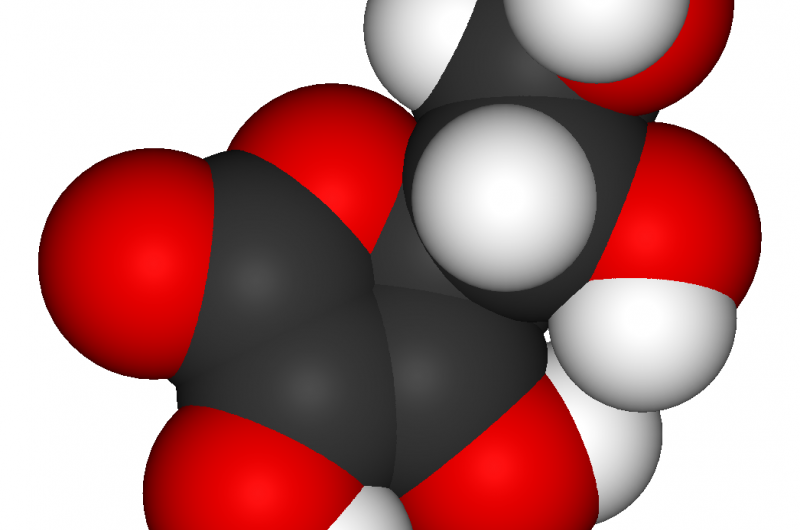Antioxidants protect cells from harmful water contaminant

Antioxidants such as vitamin C could help reduce harmful effects from hexavalent chromium, according to a new study performed with human cells. The contaminant, which is often produced by industrial processes, was featured in the biographical movie Erin Brockovich.
Federal data from nationwide drinking water tests show that the compound contaminates water supplies for more than 200 million Americans in all 50 states. The concentration of hexavalent chromium that is safe for drinking water is now under review by the U.S. Environmental Protection Agency.
"This is the first study to use human cells to test the effects of hexavalent chromium and protection by antioxidants," said Tim Mayotte, an undergraduate student at Olivet Nazarene University who performed the study. "If the new findings are further validated and go on to clinical trials, it might be possible to treat at-risk water sources with antioxidants like vitamin C to lower the risk for cancer caused by hexavalent chromium."
Mayotte will present this research at the American Society for Biochemistry and Molecular Biology annual meeting during the 2019 Experimental Biology meeting to be held April 6-9 in Orlando, Fla.
In a study designed to find out whether antioxidants might prevent cell toxicity, the researchers exposed two types of human cells to various concentrations of hexavalent chromium. They observed toxic effects for both cell types at 200 parts per billion (ppb) or higher concentrations of hexavalent chromium. However, this toxicity could be blocked by vitamin C at 10 parts per million (ppm) or the antioxidant epigallocatechin gallate at 15 (ppm). Epigallocatechin gallate is the primary antioxidant found in green tea.
In other experiments, the researchers saw DNA mutations in bacteria exposed to 20 ppb or more of hexavalent chromium. However, these mutations didn't occur when the bacteria were also treated with 20 ppm of vitamin C.
The new findings reveal that an oxidative mechanism is likely responsible for the contaminant's toxicity, which could be prevented by treating the water with antioxidants. These results could help inform water quality monitoring and regulation.
More information: Tim Mayotte will present the findings from 11:45 a.m. -1:00 p.m. Monday, April 8, in Exhibit Hall-West Hall B, Orange County Convention Center (poster E238 634.9) (abstract).
Provided by Experimental Biology
















